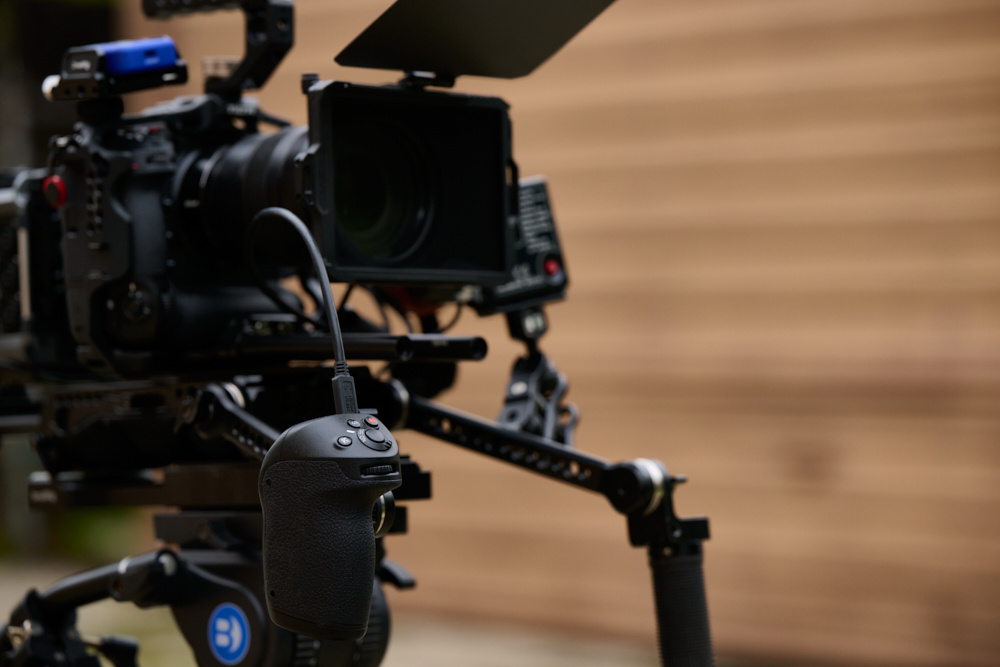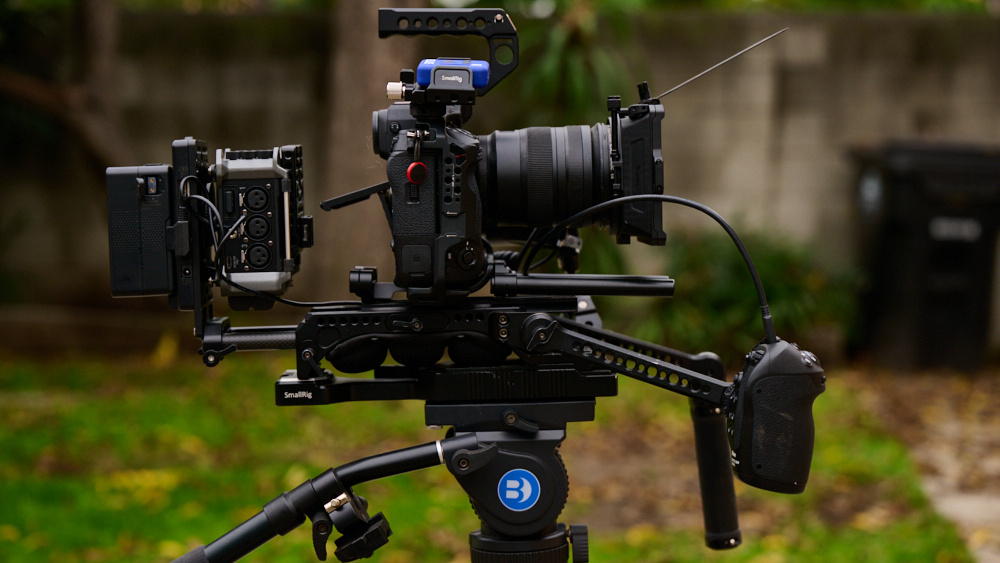Nikon’s newly released MC-N10 handgrip might be the accessory you need, even if you didn’t know you needed it.
When I bought my Nikon Z9 a little over a year ago, it was largely as a replacement for my D850. Perhaps I shouldn’t say replacement. The D850 still remains the greatest DSLR I ever owned. And parting with it wasn’t so much a desire to move on as it was being dragged begrudgingly into a new mirrorless direction by a camera, the Z9, that was too good to deny. For years, the D850 had been my still photography workhorse. I felt invincible with that thing in my hand. Anything I could dream, I could create. Well, in the still photography world, at least. While the D850 had very capable video features, it was decidedly limited in that arena as compared to more recent mirrorless technology. So, I plunked down the big bucks and took my place in line for the Z9.
I expected the camera to be good. What I didn’t expect was for it to be that good. And after over a year with it in my bag, the even more surprising revelation is not just that the video capabilities exceed my D850, that was to be expected, but that, objectively speaking, I’ve used the Z9 as a video camera just as much (if not more) than I’ve used it for stills.
Now, primarily, this is due to the type of work that I do. With the ratio of filmmaking to photography gradually shifting in recent years, I think it’s safe to say that my title has changed from being a photographer who also does motion to a director/cinematographer who also does stills. I was a filmmaker before I was a still photographer, so this shift is hardly dramatic. More like a slight rotation on a very wide dial. But it does mean that I need different things from my gear now than I might have when I first purchased the D850 in 2017.
Along with new camera technologies come new accessories. And, contrary to what influencers might tell you, not every accessory is a must-have for every artist. There are tools that help me do my job that would sit in your gear closet and collect dust. And vice versa. There are products that get me excited that go under the radar of the constant feedback loop we call the internet.

One such accessory is the Nikon MC-N10 Remote Grip. It was announced late last year without a great deal of fanfare. I think many Nikon still shooters looked at the device as some sort of oddity without a clear idea of how it would be used in the field. After all, in shape, it essentially mimics the existing handgrip on the Z9. Why would one need two handgrips for the same camera? But for video shooters, especially those whose rigs frequently spend entire years mounted to our shoulders, the MC-N10 was a sight for sore eyes.
If you’ve ever spent time with a cinema camera mounted on your shoulder, you’ll notice a couple of things. One, you’ll want a decent shoulder pad as the rig can get heavy. And two, the ergonomics of holding a rig high on your shoulder presents certain challenges. Mainly, how do you reach the buttons?
Larger cinema camera bodies solve this by usually having bodies that are longer than they are wide, the opposite of a still camera orientation, and placing the majority of the key buttons on the left side of the camera body. Or, in some cases, on the right side if it’s a camera meant to be operated by multiple people. The reason for putting all these function buttons on the side of the camera is that the operator can still change camera settings with his/her left hand without having to take the camera down from their shoulder.
Still cameras, on the other hand, are usually wider than they are long, and logically put a heavy emphasis in putting all the key function buttons high and to the right where they will be of most efficient use for handheld eye-level still shoots. Mirrorless bodies are essentially still bodies with additional video features, but the form factor remains optimized for stills. They may have all the advanced codecs and file formats desired for filmmaking. But the ergonomics often leave a lot to be desired if video is your primary concern.
Simply put, it can be hard to reach the buttons on a mirrorless camera in many video shooting scenarios, especially when your camera is shoulder-mounted, as this places the camera not only high on your shoulder but also places the buttons on the camera even higher and to the right out of view. So, how does the MC-N10 address this? Simple. It relocates those key function buttons to a more usable place. In the case of a shoulder mount, it serves to replace one of the forward handgrips, allowing you to control your camera completely without ever needing to reach high above your head.
Similarly, the tool would provide the same advantage for those shooting with gimbals or other devices where making physical contact with the camera is not advantageous. Even still shooters who might have a reason for not wanting to touch their camera during exposure, specifically those who do long exposures and might otherwise opt for a cable release, could see a benefit from detaching the camera body from the act of pressing the shutter.

The device itself doesn’t need much description. Think of the handgrip of your Z9 (or Z 6II/Z 7II) without the rest of the body. It connects to your setup via a standard Arri Rosette. The buttons are customizable in the same way as those on the camera body, allowing you to assign things like High-Res Zoom to the grip for quicker operation. For the video shooter, the command dials are clickless to provide smoother transitions when changing settings mid-take. Pretty much, what you can do with your camera’s grip, you can do with the MC-N10. Just from a far more comfortable body position.
The Remote Grip connects to the camera via a USB-C cable. This is my only minor gripe with the setup. I do wish there was a way to connect the grip via Bluetooth. While a Bluetooth connection might be less stable than a hardwired solution, the amount of cabling already dangling precariously from my video rigs does leave me with an innate desire for a cable free society. As is, the simple logistics of this being designed for mirrorless cameras does lead to one unavoidable con. The grip is designed for right-hand use. This makes sense as it mimics the layout on the camera body. But the USB-C connection on the Z9 is on the left side. This also makes sense, because you want the ports on the camera to be opposite where you’d be holding it with your hand when doing still photography. But, because the grip is on the right and the ports are on the left, it means that the cable, by necessity, needs to run across the camera in some way to reach the other side. There’s no real other way to do it that wouldn’t compromise still shooting operations, or force you into using the grip with your left hand. This is more a tradeoff of using a mirrorless camera system versus a more dedicated cinema body with ergonomics made with video-centric ports in mind. So, my cable phobia will simply have to grin and bear it.

Minor unavoidable gripes aside, purchasing the MC-N10 was a real no-brainer for me, as I suspect it will be for most video professionals shooting with the Z system. Most high-end video systems have such accessories to help accommodate the various ways in which video rigs are put together. It’s great to see Nikon just starting to build out its system. With the Z9, they have a body that competes with any other product on the market. Now, with accessories like the MC-N10, they are building out more and more of the system that supports it. The camera itself is only half the battle. It takes a village of components to form an effective filmmaking system. And this grip is just one more step in the right direction.







What I am wondering is how we use an external battery run to the USB-C port and the handgrip controller also ?
I’d like to have a V mount with USB-C to power the camera for long days of video and have the Nikon control grip . There is only the one port ?
Am I mistaken about how this is to be done .
Thanks
If you could program a wheel to control the focus, they'd sell a lot more of these.
Good suggestion.
Yes I was thinking zoom control myself. But why not both . Have the front and rear command dials do this .
Front dial do Power Zoom and rear for power focus . Have a usb-c charger/power port on the control grip .
Your article should have covered all the different parameters that this item can control also I'd like to know why the other Z cameras aren't listed as being compatible? No Z50 or Z5 even though they all have a USBC port. Is Nikon gonna have to come out with another version that works with these cameras?